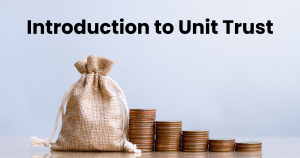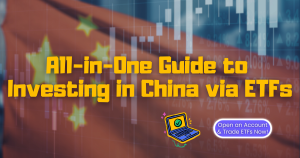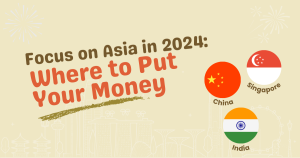World Earth Day 2022: Invest in our Planet April 21, 2022

For the past few months, Phillip Market Journal has been pushing the ESG theme for investing. And the reason we do this is not only because we care about the health of our planet but also because it makes economic sense as well.
The upcoming Earth Day1 on 22 April 2022 (Theme: Invest in our Planet) is especially a good opportunity to reiterate the value of ESG investing.
The corporate world is now taking the ESG theme very seriously. And the Taskforce on Nature-related Financial Disclosures is a good example of this2.
The first beta version of the TNFD framework, which was released in March 2022, marks an important step by the market to tackle the risk of nature loss and incorporate nature-related risk and opportunity analysis into the heart of corporate and financial decision making.
According to the TFND, more than half of the world’s economic output – USD44tn of economic value generation – is moderately or highly dependent on nature. So, nature loss clearly represents significant risk to corporate and financial stability.
The United Nations is also doing its part through the UN Biodiversity Conference (COP 15). The first part of COP 15 was held online from 11-15 October 2021, and the second in-person part is scheduled for 25 April – 8 May 2022; in Kunming, China3.
The UN Biodiversity Conference aims to convene governments from around the world to agree to a new set of goals for nature over the next decade through the Convention on Biological Diversity post-2020 framework process.
The framework sets out an ambitious plan to implement broad-based action to bring about a transformation in society’s relationship with biodiversity and to ensure that, by 2050, the shared vision of living in harmony with nature is fulfilled.
The conference is also looking at the implementation of the protocols of the Convention on Biological Diversity that deal with the fair and equitable sharing of benefits from the use of nature, and the safe transport, handling and labelling of Living Modified Organisms.
The world’s young people are understanding the “green” message and acting on it, according to the Earth Day website. Gen Z (those born between 1996 and 2010) is providing inspiration, with 45% having stopped purchasing certain brands because of ethical or sustainability concerns.
And through their actions, they are showing that they have the power to lobby for and support businesses that take steps to protect the environment through their practices and climate-friendly investments.
Singapore too is not lagging in green initiatives which invest in our planet. The ‘SG Green Plan 2030’ outlines the country’s commitment to a sustainable future. Its five pillars include a
1. “City in Nature” that aims to create and restore green and blue spaces in Singapore
2. “Sustainable Living” focused on circularity and waste reduction
3. “Energy Reset” is set on increasing Singapore’s energy efficiency and use of clean energy by 2030
4. “Green Economy” seeks green business and growth opportunities in industry transformation and sustainability solutions
5. “Resilient Future” aims to build up the nation’s climate resilience and enhance its food security by meeting 30% of its nutritional needs through locally produced food by 2030.
In Greening the Financial System, the Monetary Authority of Singapore’s ‘Green Finance Action Plan’, announced in 2019, aims to grow the country as a leading global green finance centre with new investments in green businesses, technology and infrastructure.
MAS has been driving efforts to build resilience to environmental risks, develop green finance markets and encourage green FinTech innovation. The Central Bank has taken active steps to engage financial institutions to consider ESG criteria in decision making processes, support the adoption of industry standards and guidelines and encourage industry-led capacity building efforts.
As for how investments in products with the ESG tag are doing, a record USD649 billion poured into ESG-focused funds worldwide through November 30 2021, up from the USD542 billion and USD285 billion that flowed into these funds in 2020 and 2019, respectively, Refinitiv Lipper data showed4.
ESG funds now account for 10% of worldwide fund assets.
Stocks of companies rated highly for their sustainability efforts also notched gains. The MSCI World ESG Leaders’ index rose 22%, compared with the MSCI World Index’s gain of 15%, according to the Reuters report published in late December 2021.
Of the USD 6.1 trillion in ESG funds, 59% of the money is held in Europe, Middle East and Africa, according to Lipper, reflecting the region’s earlier embrace of the investing trend.
Inflows in European ESG funds dropped in 2021, but this was more than offset by rising flows into US and Asian ESG funds.
So, we can now see that ESG investing has clear positive effects for the world we live in and is profitable as well. But how does one get exposure to this sector?
ETFs are an easy way to dip your toes in the water. And here are some of the options PhillipCapital offers:
| ETF | iShares Global Clean Energy ETF | Invesco WilderHill Clean Energy ETF | First Trust NASDAQ Clean Edge Green Energy Index ETF |
| Ticker | ICLN | PBW | QCLN |
| AUM | USD6.41 Billion | USD3.34 Billion | USD3.28 Billion |
| Inception Date | 06/25/08 | 3/3/2005 | 02/14/07 |
| Expense Ratio | 0.46% | 0.70% | 0.60% |
| Number of Holdings | 96 | 80 | 65 |
| Top 3 Holdings |
|
|
|
These ESG themed ETFs provide investors with diversified exposure to the renewable energy supply chain, from clean energy producers to technology providers, EVs and equipment manufacturers.
Each ETF provides investors with a diversified number of holdings, keeping the risks spread out.
For example, the First Trust NASDAQ Clean Edge Green Energy Index ETF has exposure in the EV market with Tesla shares, while also giving exposure to the energy market with Emphase Energy Inc shares.
Through these investments, investors can support causes that they personally believe in and reap investment benefits at the same time, a win-win scenario.
Investors who are interested in thematic ETFs can consider building a thematic ETF portfolio.
A typical thematic portfolio consists of a few ETFs with a similar theme or idea that follows certain social, economic, environmental trends prevalent in society.
For example, an investor who is interested in ESG, Robotics AI and E-sports can invest in thematic ETFs that cover these themes.
With the help of our POEMS ETF Screener, investors can access ETF analytics of the thematic ETFs that they are interested in.
For investors looking at unit trusts which focus on ESG, here are the 5 largest ESG Funds ranked by assets under management which you can find at: http://unittrust.poems.com.sg/all-about-funds/fund-finder/
| FSSA Dividend Advantage Fund |
| First Sentier Bridge Fund A |
| Schroder ISF Global Sustainable Growth Fund F Acc SGD |
| BlackRock Sustainable Energy Fund A2 SGD H (LU1978683503) |
| HSBC GIF – Global Equity Climate Change Fund AD SGD |
In consultation with Phillip Capital Management ESG.
Reference:
- [1]https://www.earthday.org/earth-day-2022/
- [2]https://tnfd.global/
- [3]https://www.unep.org/events/conference/un-biodiversity-conference-cop-15
- [4]https://www.reuters.com/markets/us/how-2021-became-year-esg-investing-2021-12-23/
Disclaimer
These commentaries are intended for general circulation. It does not have regard to the specific investment objectives, financial situation and particular needs of any person who may receive this document. Accordingly, no warranty whatsoever is given and no liability whatsoever is accepted for any loss arising whether directly or indirectly as a result of any person acting based on this information. Opinions expressed in these commentaries are subject to change without notice. Investments are subject to investment risks including the possible loss of the principal amount invested. The value of the units and the income from them may fall as well as rise. Past performance figures as well as any projection or forecast used in these commentaries are not necessarily indicative of future or likely performance. Phillip Securities Pte Ltd (PSPL), its directors, connected persons or employees may from time to time have an interest in the financial instruments mentioned in these commentaries. Investors may wish to seek advice from a financial adviser before investing. In the event that investors choose not to seek advice from a financial adviser, they should consider whether the investment is suitable for them.
The information contained in these commentaries has been obtained from public sources which PSPL has no reason to believe are unreliable and any analysis, forecasts, projections, expectations and opinions (collectively the “Research”) contained in these commentaries are based on such information and are expressions of belief only. PSPL has not verified this information and no representation or warranty, express or implied, is made that such information or Research is accurate, complete or verified or should be relied upon as such. Any such information or Research contained in these commentaries are subject to change, and PSPL shall not have any responsibility to maintain the information or Research made available or to supply any corrections, updates or releases in connection therewith. In no event will PSPL be liable for any special, indirect, incidental or consequential damages which may be incurred from the use of the information or Research made available, even if it has been advised of the possibility of such damages. The companies and their employees mentioned in these commentaries cannot be held liable for any errors, inaccuracies and/or omissions howsoever caused. Any opinion or advice herein is made on a general basis and is subject to change without notice. The information provided in these commentaries may contain optimistic statements regarding future events or future financial performance of countries, markets or companies. You must make your own financial assessment of the relevance, accuracy and adequacy of the information provided in these commentaries.
Views and any strategies described in these commentaries may not be suitable for all investors. Opinions expressed herein may differ from the opinions expressed by other units of PSPL or its connected persons and associates. Any reference to or discussion of investment products or commodities in these commentaries is purely for illustrative purposes only and must not be construed as a recommendation, an offer or solicitation for the subscription, purchase or sale of the investment products or commodities mentioned.
About the author
Elston Soares
Elston Soares is an editor with the Phillip Securities Research team.

 How to select a unit trust
How to select a unit trust  Introduction to unit trust
Introduction to unit trust  All-in-One Guide to Investing in China via ETFs
All-in-One Guide to Investing in China via ETFs  Focus on Asia in 2024: Where to put your money?
Focus on Asia in 2024: Where to put your money? 









